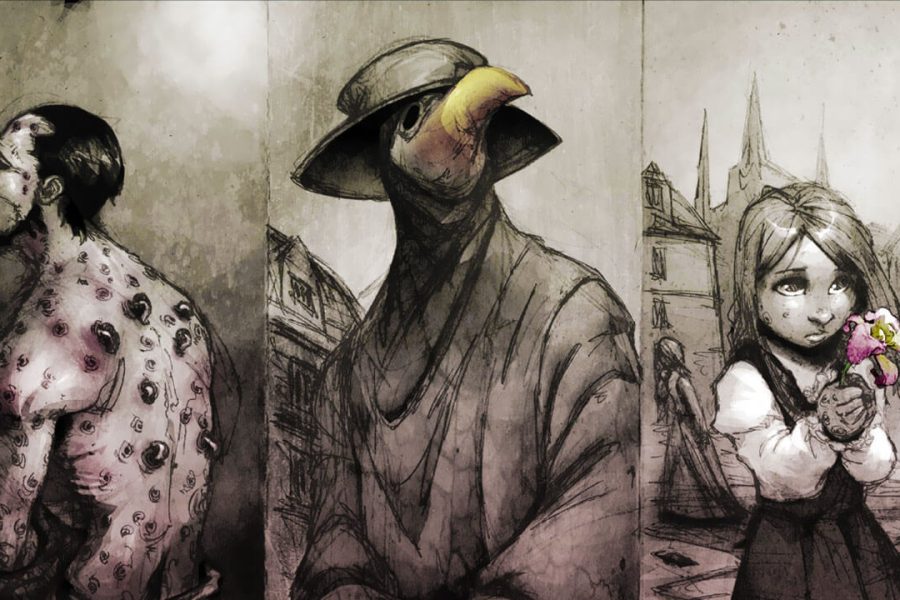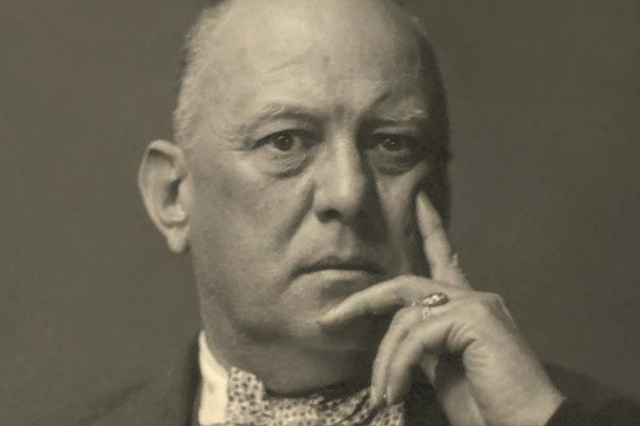The best supervillains have believable backstories, even if they start in outer space. They are multidimensional, flawed, believably motivated. Crucially, they are more connected than the heroes, as disturbing as that may be.
Unsurprisingly, many of them are based on real people. And often, it's more than just looks. Here are the top ten, ranked by their closeness to their real-life inspirations.
10. Ozymandias
After DC bought the rights, Charlton Comics' costumed crime fighters, mostly non-superpowered, became models for " Guardians » Alan Moore . Peacemaker became a comedian; Blue Beetle, Nite Owl; The Question, Rorschach; Nightshade, Silk Spectre; and Captain Atom, Doctor Manhattan.
Ozymandias Moore (Adrian Veidt) based on Charlton's Thunderbolt or Peter Cannon. And while Veidt is technically "anti-villain" (a character whose "desired ends are generally good, but whose means...range from evil to undesirable," in this case preventing World War III by killing millions of people), Peter Cannon was also not an anti-villain. 'superhero.' Both characters have no superpowers; they are simply in excellent or near-perfect condition in body and mind. Consequently, each was based on the heartthrob of his time — or at least on the heartthrob of a thinking woman.
Cannon turned to John F. Kennedy and actor Robert Redford, while Veidt turned to Julio Iglesias and actor Barry Foster, best known as the smart blond detective Van der Valk.
9. Poison Ivy
Poison Ivy was one of several female characters created by Robert Kanigher, who also wrote for Wonder Woman. She was partly inspired by "Rappaccini's Daughter" Nathaniel Hawthorne — a story in which a girl becomes poisonous from contact with poisonous plants. But she also draws Eve in the Garden of Eden and visha-kanyu , or the poisonous girls of ancient India.
In his first appearance ( Batman #181 (1966)) she was nothing more than "plant-based femme fatale" . Artist Sheldon Moldoff, who also worked on Batgirl, modeled her after a pin-up Bettie Page, right down to her signature bangs. And while Poison Ivy's look has evolved, the slutty '40s version of her returned in 2013. figurines «DC Bombshells» .
8. Thief in law
Morbidly obese characters are rare in comics; they take up too much space. But Stan Lee wanted a fat villain. Specifically, he wanted a film based on actor Sydney Greenstreet, known for his roles as "the fat man" in the " "The Maltese Falcon" And "Casablanca" .
It was originally going to be Vulture, but Steve Ditko I thought it was stupid Instead, Greenstreet's monstrosity was relied upon by the crime boss Kingpin ( The Amazing Spider-Man # 50 (July 1967)). And he was not the only one. The characters in Batman movies " (1945 film), "Nick Fury: Agent of S.H.I.E.L.D. #5 " And comics "Doctor Who" were also based on the actor.
…as did Jabba the Hutt. Apparently, when George Lucas asked his crew for something "alien and grotesque" They thought of Sydney Greenstreet.
7. Zsasz
Gotham's nihilistic serial killer has no shortage of real-life inspiration. Son of Sam , Richard Chase , Israel Keyes and others were hard to pin down because they left no discernible pattern; they killed people at random. Even Zsasz's signature marks (cuts on his skin for each life he took) are a common pop culture cliche .
His name, however, comes from someone specific: psychiatrist Thomas Szasz. Although they have little in common, they both lost faith in what they believed in. Zsasz from Batman (Mr. or Victor Zsasz) lost faith in the value of life, and Dr. Szasz began to question his entire profession. In his view, the role of a psychiatrist was to evaluate and treat neurological damage, not to cure "life problems" or so-called "mental illnesses." In his opinion, this only made the situation worse.
Batman as a franchise I agree. Arkham Asylum, "closed institution for forced detention" and punitive treatment, staffed by evil psychiatrists. In fact, many Batman's enemies are psychiatrists — from Hugo Strange and Jonathan Crane/Scarecrow to intern Harleen Quinzel/Harley Quinn. Far from helping their patients, they deliberately drive them crazy.
6. Sinestro
In 1961, the same duo that created Hal Jordan, Gil Kane and John Broome, created their arch-enemy Sinestro. He is considered the perfect adversary or nemesis, "Hal's dark reflection" , stealing the ring of a dying Green Lantern to infiltrate the Green Lantern Corps.
Based on David Niven (the only actor to ever win an Oscar at a ceremony he hosted), Sinestro shares not only his mustache, but his « polite refinement" . Niven's most typical roles include the villain in "The Pink Panther" (1963) and James Bond in "Casino Royale" (1967 parody).
Such is Sinestro's charm that image character Mark Strong V "Green Lantern " (2011) almost made up for what was otherwise a terrible film. Strong wasn't a big fan of the comics, but he fell in love with Sinestro. By researching the character's backstory and motivations, he made sure his portrayal was accurate. He even insisted that the filmmakers abandoned the tail that they wanted to give him. Also, knowing that the character was inspired by Niven, he based his performance on the actor.
5. Darkseid
Darkseid first appeared in a spin-off comic "Superman's Pal Jimmy Olsen" (#134, 1970) But he became one of DC's most powerful villains. In fact, he's one of the most powerful beings to ever appear in comics.
Obsessed with enslaving entire planets and ending free will in our galaxy, he was inspired by two historical figures: Adolf Hitler and Richard Nixon , with the emphasis being on Nixon. There were plenty of reasons to hate the president: Vietnam, nuclear weapons, economic inflation… But Darkseid creator Jack Kirby had even more reasons than most, since he was a blue-collar worker, a Jew, and a veteran.
Of course, while Nixon and Hitler inspired the character, so did Darkseid's physique. So Kirby looked elsewhere for a model, basing his appearance on Darkseid's actor Jack Palance He also based Darkseid's speech on the actor's, a tribute to his on-screen presence.
4. Joker

If you're a fan of the Joker, you probably know that he was based on the "The Man Who Laughs" (1928) - A silent film adaptation of Victor Hugo's novel. Starring Conrad Veidt as the titular Gwynplaine, it is the tragic story of a man whose mouth has been disfigured into a permanent grin. Bob Kane, Bill Finger, and Jerry Robinson copied Veidt's frightening "Glasgow smile" as well as his hair and makeup for the Joker's early gags in Batman #1" (1940). Successive artists also painted on film. in the film "Batman: The Killing Joke" (1988) Brian Bolland created "tear-stained eyes" your Joker based on Veidt's eyes in one of his scenes.
Beyond their appearance, however, the characters are not identical. All they really have in common is their social ostracism. But Hugo didn't just make up Gwynplaine; he was inspired by a kind of proto-Joker who actually once walked the streets. Edmond Barbier, an eighteenth-century Parisian chronicler, recalled in his diary that he had seen a man with grinning from ear to ear ear, the lips of which were widened by cuts. In Hugo's novel, Gwynplaine's wounds were inflicted in childhood ( like Heath Ledger's Joker ) kidnappers who wanted to sell him to the circus - something like that happened in those days.
In other words, Clown Prince of Crime Batman was, not too indirectly, based on a real Parisian, unfortunate for all the reasons - not to mention the French revolutionary spirit - to become the real Joker himself. Given that Batman represents the elite, and in " The Dark Knight : "rebellion" - state during the French Revolution , interesting origin of his enemy sine qua non .
3. Mandarin
As Iron Man's archenemy, the Mandarin has appeared in various forms, including as Shang-Chi's father . But the original was based on Fu Manchu, the standard twentieth-century "evil Chinaman" with a devilish beard and dark magic powers. Created by writer Sax Rohmer, Fu was conceived as "the yellow peril embodied in one man" , seeking the downfall of the West. Accordingly, Romer got the idea when he asked a Ouija board how he could get rich and was told the word CHINESE.
The villain Fu Manchu has since appeared in film, television, radio and comic books, including "The League of Extraordinary Gentlemen" Alana Moore The character even gave his name to a brand of gummy candy: Fu Man Chews.
Needless to say, Fu Manchu offends many Chinese people . It's because of him Shang-Chi and the Legend of the Ten Rings » (2021) called disputes in China ; even with a modernized, non-racist Mandarin language, the franchise remains maligned as "the shadow of Fu Manchu."
Interestingly, Fu's real-life inspiration was even more racist. In the nineteenth century, popular Chinese stage magician Chung Ling Soo lost his job to a white impostor: a rival magician William Ellsworth Robinson . He copied Chang's name, appearance, and mannerisms in order to impersonate him and eventually supplant him. He even maintained this image in public by speaking fake "Chinese." Fu Manchu, the representative of Western Orientalism, is therefore believed to have been inspired by Ellsworth. Only after his death — on stage by faulty pistol — A 20-year-old lie has come to light.
2. Magneto
As everyone knows , X-Men Stan Lee were an allegory for the black civil rights movement, with Professor X as Martin Luther King and Magneto as Malcolm X. Like Malcolm X, Magneto seeks to empower his community to rise up against their oppressors, and Professor X, like MLK, dreams of peace and equality for all.
However "X-Men" Stan Lee were cancelled early on. And Chris Claremont, who took over, had other ideas. His Professor X and Magneto were based on rival Israeli prime ministers: David Ben-Gurion, who sought to to create a welcoming home for the Jews and peace with the Arabs in Israel; and Menachem Begin, the opposition leader. Although both were Zionists, Begin was more aggressive. Believing that Jews were racially superior to Arabs, he doubled down on the West Bank and Gaza. He was also linked to Deir Yassin massacre , in which hundreds of Palestinian men, women and children were killed, despite the fact that the Nazis were persecuting him on racial grounds.
He eventually left his post a broken man after the death of his wife, which, as know fans X-Men , is another connection to Magneto.
1. Grigory Rasputin

Hellboy's archenemy is taken from history, although some facts are obviously embellished. For example, the comic book fictionalized version of the "crazy" Russian monk first summoned Hellboy from hell However, the "real" Rasputin is also highly fictitious, and the "facts" vary depending on the source.
According to his killers, he belonged to the Austrian Green Hand, a shadowy organization (similar to the Ogdru Jahad" from " Hellboy » ), who wielded power over the Tsar. His influence was blamed for Russia's involvement in World War I, which caused economic damage to the state. His killers also claimed that he hosted "blasphemous orgies" and "used his demonic powers [at "lavish dinner parties"] to force high-status women to lick gravy from his filthy fingers." Rasputin's daughter, on the other hand, said he was misunderstood. To her, he was a simple country bumpkin old man , who "handed out gingerbread to little children."
Anyway, his death was something like "Hellboy" — at least according to his killers. Although he was treated to poisonous pies and wine, Rasputin became "more and more cheerful" . When he finally got up to leave, he was shot in the back instead. Then they left the room, and when they returned, Rasputin was gone. To their horror, they found him outside, walking to their car. He was shot several more times, his body was stuffed into the trunk, and thrown through a hole in the ice - "finally ridding the world of Rasputin."













Оставить Комментарий